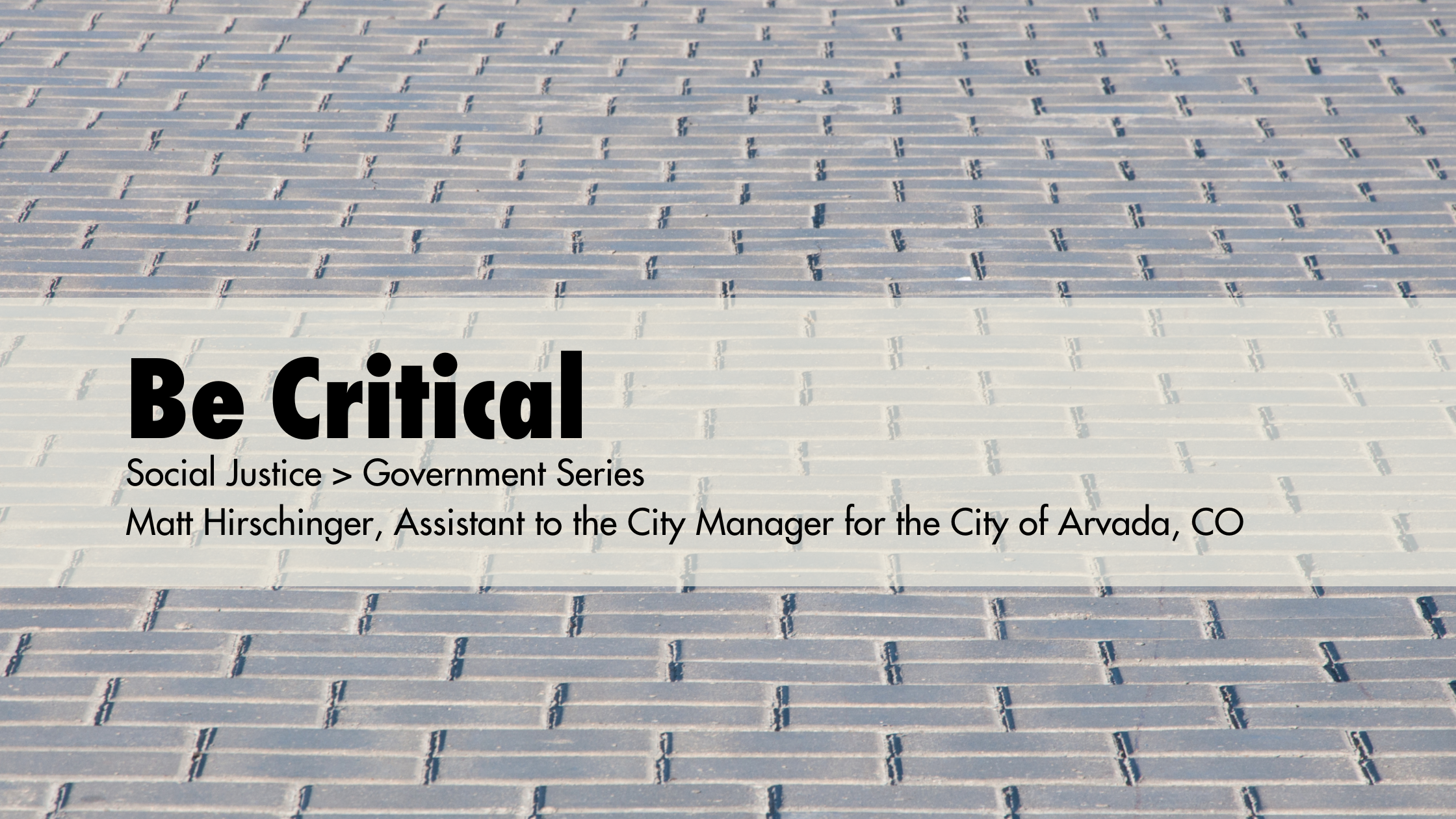
This guest article is by ELGL member Matt Hirschinger, Assistant to the City Manager for the City of Arvada, CO. Read all of Matt’s other articles at the Social Justice –> Government homepage.
I took a Planning Law and Institutions class so I could tell Colorado City Planners that they have the ability to make equitable changes in their organizations and communities. It was reading hundreds of pages of case law primarily to encourage others to take some initiative. It may seem a roundabout way from point A to point B, but it’s at the core of what it means to engage with matters of diversity, equity, inclusion, justice, and other key themes of trying to make a positive difference.
It’s about being critical, of knowing what we’re trying to change inside and out. Otherwise, we stumble around in the dark hoping we hit our target. It’s knowing the topic of our efforts in equity from the roots to its leaves so we know how to help it grow, trim it down, or even remove it in some cases. It’s hard work, and that’s the point. Our systems are designed to make change difficult, and if we can reach that high bar then it means the change we make has a better chance of enduring.
In this instance, it’s knowing that Planners face a difficult dilemma with community engagement. Often those we most need to hear from, those who are most impacted by land use decisions are silent. Often those who are already well off, who intentionally or unintentionally push for inequitable policies and decisions such as denying affordable housing, moving industrial production towards lower-income neighborhoods, of prioritizing projects that aren’t as urgent are the loudest voices. Being aware of this contrast helps us determine that community engagement needs to address that the first ones to see the opportunities to speak are not necessarily our target audience.
It’s knowing what’s been effective and not in the past. Whereas trying to help minority groups based on race has not done well in the courts, more generalized themes like “the public good” and “economic development” afford planners much more leniency. Just as these concepts can be used to justify problematic practices like gentrification, so too is the potential to define and use these tools in a more equitable fashion, perhaps even more effectively than justifying our actions with the argument of social justice.
It’s about knowing that we can change more than we think we can. Many of us in local government work under the notion that we are cogs in the systems, that there are fixed structures in place unaware that our policies and practices were determined by people who sat in our seat and had the audacity to push for a change for the better or worse (or both). For the planners, it’s understanding they have a level of expertise that residents don’t, therefore they need to leverage that expertise to help. They are in a position to engage with the comprehensive plan, permitting processes, land-use decisions, and more.
And on the flip side being critical is knowing our own limitations. I am not a planner. Taking the one graduate course allowed me to better understand and be critical of planning as a whole, and helped me better tailor my webinar. My audience was those who’ve taken full degrees specific to planning, who live it out in their daily job. My strength was focusing on equity for the class research and readings, of the broader themes and lessons in social justice I’ve picked up, and thus that is what I could bring to the table. That is why my best move was not to try to make any planning reforms myself, but to enable those better able and positioned to do so. Knowing our limitations is not an excuse to do nothing, it is to help point us to where our efforts can be directed.
Be critical. If we are interested in reforming the public sector to better serve everyone, then we must look at things from as many angles as we can. Break it down to its component parts, add it up, synthesize it, remove it, evolve it, highlight it, sideline it, it’s through critical analysis that we’re able to find creative and pragmatic solutions.
If instead, we accept our institutions as they are as a given, we blind ourselves to what can be.
So be critical.
